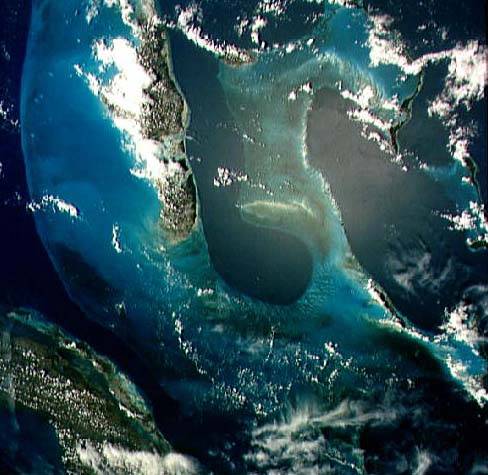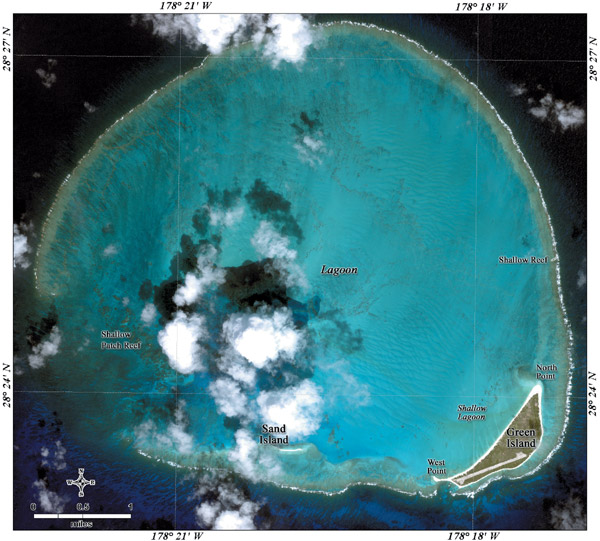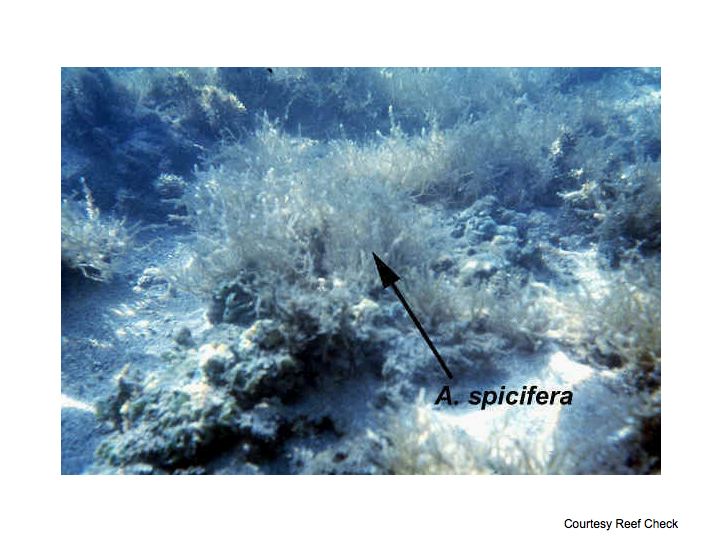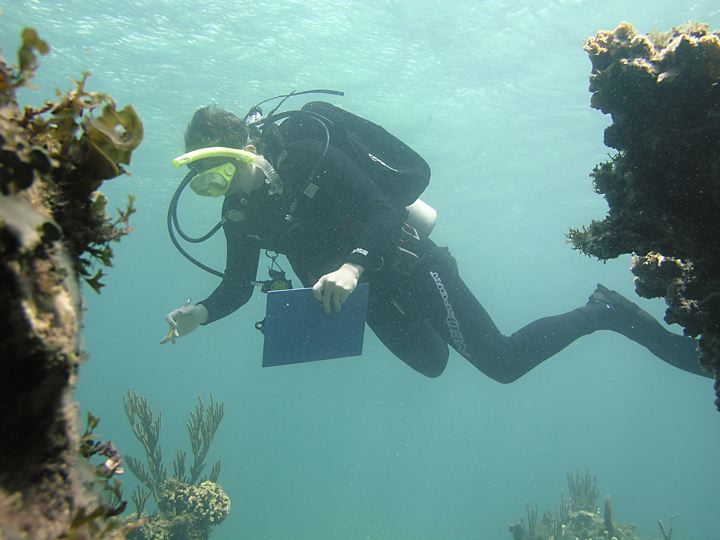

Coral reefs are widespread today in low latitude oceans where mean annual temperature and/or minimum temperatures at the sea surface (SST) are above 20°C. The coral platforms typically form fringing reefs and are barriers to wave energy. In the continental US, our only significant reefs are in the Florida Keys. Perhaps you have visited and snorkled on some of these reefs in Pennecamp State Park. The Hawaiian Island chain also hosts some spectacular reefs, which are, on some island margins, highly pristine.
But, as stated at the outset of this lesson, coral reefs nearly everywhere are imperiled, if not because of boats running aground and or anchoring on them then because of waters that are at times too warm and because of viral and bacterial diseases that are able to take advantage of these stressed organisms. In some cases, too much sediment and nutrients choke out corals and or promote overgrowth of green algae that block sunlight to the coral animals and their essential algal symbionts (stay tuned to learn a bit about these). These reefs are critical elements of the ecosystem, hosting a highly diverse animal and marine plant population as well as protecting adjacent coastal lagoons and and areas from erosion and damage by waves. The shallow oceans would seem sterile and, well, even ugly without them. Take a look at Figure 6-3, for example that shows a reef that is denuded due to disease and algal overgrowth.

At any rate, before we go any farther, you should check out this short slideshow that will familiarize you with general elements of coral reefs today. There are maps of their distribution and photographs of corals and coral diseases. We recommend that you check out a DVD of "The Blue Planet" (also good for your regular dose of David Attenborough).

So, assuming you have looked at the slideshow as suggested, let's go on to the next section for some interesting (we hope) consideration of the interaction between atmospheric chemistry, the oceans and coral reefs. Another connection to "global warming" with a twist.